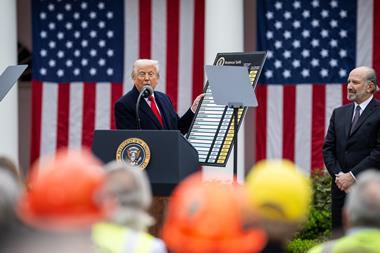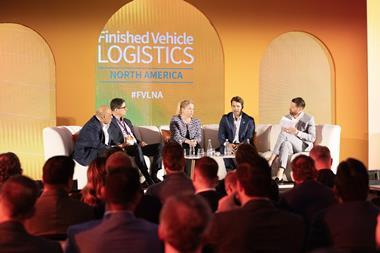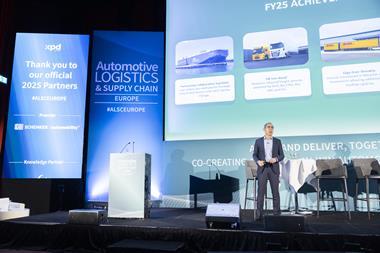
BLG depends on a highly advanced and organised IT system to link its distribution, port handling and technical services. Marcia MacLeod finds out what makes the vehicle logistics giant’s system tick.
In 2009 BLG Automobile handled 4.6m finished vehicles at its 13 premises, including 1.2m at its largest site at the port of Bremerhaven. For 2010, despite the recession, it expects to look after 5m units. And it wouldn’t have the remotest possibility of moving this volume of vehicles without well planned processes and an efficient IT system to support them.
“We inherited an old system when we acquired a finished vehicle handling company,” explains Stefan Schönbrunn, chief information officer. “But this was inflexible and outdated. Our challenge was to build a new IT system based on the inherited platform, but which would give us and our customers an overview of the movement of vehicles–when any particular vehicle is due to arrive at one of our sites; what we do with it and when; if the vehicle is to go into storage, where and for how long; and when the vehicle leaves us for final delivery to a dealer or third-party distribution company.”
BLG needed a multi-lingual, global system that could be adapted in future as well. “There wasn’t anything on the market that met our requirements,” he says. “If we picked an off-the-shelf system, the amount of customisation it would need would make it too expensive, and still not give us what we wanted.” Instead, BLG wrote its own Internet-based software, known as JC@RS (for Java Cars). It is made up of three basic programmes: C@RIn, the core system used at all BLG’s port and inland terminals; C@RCenter to control PDI, where BLG is contracted to provide this service; and C@RTrans for distribution. The actions of Java Cars mirrors the flow of a vehicle from the time it arrives at BLG to the time it departs. “First we get pre-notification from the OEM telling us when a vehicle is due to arrive,” Schönbrunn explains. “We will know on any day how many vehicles to expect at each of our sites and which OEM they are coming from.”
When the vehicle is delivered, BLG captures all the data relevant to it: vehicle identification number (VIN), OEM, the factory at which it was made, when it was shipped and where it is going. In 95% of cases, this data is captured by scanning a bar code label; in the 5% of units without a bar code, BLG creates its own.
This is not as easy as it sounds, though, as BLG has to be able to read 136 different bar code types. “All bar codes must have 17 digits to meet international standards,” Schönbrunn says, “but some only show the last six or eight digits, and some only reveal a few in the middle.
To make matters worse, some labels have 35 bar codes on them, leaving BLG to guess which one contains the VIN. Some do not include the VIN at all, meaning it must be found on the vehicle. In these cases, staff have to manually type the VIN into their handheld devices, which will be either a Symbol, Intermec or Casio mobile device.
The long road to RFID
BLG is trying to move away from bar codes to RFID, but there are still too many barriers to successful implementation. “We have a lot of pilot projects on the go,” Schönbrunn emphasises, “but to be successful, they have to meet multiple RFID standards, each including different information on the label, different data formats, different wireless frequencies and different locations for text. I call it ‘the long way to RFID’.” So for now, BLG relies on bar code scans to tell it whether to bring a unit to its VPC or technical centre for PDI; put it in storage; or deliver it to its own or a third-party distribution centre. C@rCentre also tells the employee where in the terminal or storage area to put the car, at the same time optimising the best use of the space. “Bremerhaven comprises 3km2 with multiple storage and preparation areas. We need to know where any vehicle is at any time; Java Cars can provide that information,” says Schönbrunn. “Storage areas are mostly divided by OEM and next destination, but the system dictates where any unit will be stored. Dedicated areas are set out for dealer-tagged units, which are stored according to dealer postcode.”
As the OEM has promised most vehicles by a particular date, JC@RS measures lead time by working backwards from the due delivery date. If, for example, a vehicle is due for delivery in two weeks, JC@RS will remind BLG the vehicle has to be at the distribution centre by X date, and any final preparation completed by Y date.
When a vehicle first arrives at a BLG site, it is checked for damage, which employees record on the system via their handhelds. The system can then monitor the progress of any necessary repairs. C@rCenter will identify the location of the necessary parts and materials to effect the repair, or tell the user that the OEM has arranged for its dealerships to take care of repairs so BLG should deliver the cars as they are. “The employee can see on his handheld whether the damage has already been captured on the system,” says Schönbrunn. “Depending on the type of damage, the system tells the employee where to take the vehicle, such as the paint shop or workshop. The change of vehicle location is keyed in so BLG always has up-to-date information.”
Tracking transport
C@RTrans controls and monitors distribution, including import and export movements. “Cartrans plans vehicle loads onto our truck fleet and optimises delivery routes,” Schönbrunn explains. “We know which cars are going on which lorry, where each lorry is going to, for example a port, a dealership or a third-party distribution centre.” The system is also connected to an in-cab communication system that allows BLG to talk to drivers, while an in-cab GPS also gives us the location of each truck. All necessary shipping documentation, including the bill of lading for exports, is also produced.
BLG receives advance notification from the OEM telling it which export vehicles are going on which ship at which port. The system knows when the ship is due to arrive, load and leave again–and it tells BLG whether the vehicle should be transported by road or rail, and by which company. Although the shipping line normally carries out vessel load planning, if it doesn’t have a branch office in the relevant port, it may ask BLG to do this, too.
Advanced notification is also provided for imports: which and how many vehicles are due to arrive on which ship, from which shipping line, at which port, the expected arrival date and estimated time the vehicles will be ready for collection. Normally all import paperwork is sent to BLG electronically in advance, but where short-sea shipping is concerned, the OEM may not be able to provide the data in time, which can delay vehicle throughput at the port.
A Babylon of IT links
However comprehensive, though, JC@RS cannot work alone: it needs to be integrated to other software both internally and externally. Within BLG, it is connected to SAP to provide financial control, business intelligence and management reports. Externally, JC@RS is integrated with both EU and non-EU (eg, Russian, Ukrainian) customs authorities. Data held on the system is turned into a customs entry.
More importantly, it is also linked to OEMs, distribution companies and other partners, which can cause huge problems. “We have interfaces with 142 companies,” says Schönbrunn. “Each is different from the others and we have to accommodate their needs. This means we exchange data at a rate of 3,300 transfers per hour in 1,680 different formats. We even have one customer which uses an old DOS-based standard, Kermit; we have to maintain a Windows 95 PC just to communicate with that customer.
“We must translate incoming data into a language Java cars can understand–and even if the data is in Edifact or Odette, there may be different dialects–and then translate outgoing messages into a format readable by the intended recipient.” But the ability to connect to clients is vital for BLG. Every data input changes the entire system, so that, for example, if a vehicle is moved to storage, it is seen by all. “We need to know our customers and partners receive all of the updates,” Schönbrunn says.
Needless to say, reliability is vital: if JC@RS goes down, work would grind to a halt. To ensure this does not happen, the company opted for a private, rather than public, wireless network, giving it complete control over the infrastructure. At Bremerhaven, there are 500 wireless access points and each is connected directly to the network, not to each other, so that if one crashes, it does not bring down the system.
For BLG, JC@RS is more than an IT system: it is the heart and nerve system of a large, complex and very efficient finished vehicle operation.


































